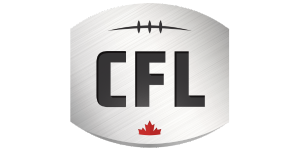
Budgeting After the Coaching Carousel
March 26, 2024
With some programs in the middle of or about to start Spring Ball and the NFL Draft around the corner, it feels like the offseason coaching carousel has at least slowed down- if not stopped- so you can all catch your breath and focus on the Xs and Os which may have been on the back burner for the past few months. Let’s take a look at some of the turnover that took place this offseason (1):
- National Football League: 7 teams changed Head Coaches
- NCAA Bowl Subdivision: 31 schools changed Head Coaches, 52 schools changed Offensive Coordinators, and 47 schools changed Defensive Coordinators
- NCAA Championship Subdivision: 27 schools changed Head Coaches
- NCAA Division II: 23 schools changed Head Coaches
- NCAA Division III: 18 schools changed Head Coaches
- NAIA: 8 schools changed Head Coaches
The ripple effects of the changes listed above are seemingly endless. From assistant coaches to QCs and GAs to Strength and Conditioning staff and beyond, it is impossible to measure the impact that turnover in the industry has on coaches and their families on many levels. One aspect of life that almost certainly changes with a new job is financial. Whether a coach takes a promotion with a higher salary or takes a step back in income perhaps with less responsibility or to coach at a smaller program, there is no better time to review and design a budget than after a job change.
While following a budget might seem limiting, when used as a guide, a budget can empower you to take control of your financial life. Having a good understanding of your monthly saving and spending habits helps you make smart financial decisions that can position you for success in the long run and reduce your money-related stress.
Creating a budget may sound simple, but a flawed financial map can leave you struggling to reach your goals. Sometimes the collective everyday spending decisions you make have a material impact on your longer-term goals. Fortunately, a combination of tried-and-true practices and modern tools can help you find your way. And even if you’re already good about budgeting, it can be helpful to periodically revisit your plan and adjust it to reflect your current situation.
Here are five steps that will help you avoid money-related stress and make smart spending and saving decisions:
- Determine Your Income
Specifically, you’ll want to determine your average monthly income. This may be a simple matter of reviewing your take-home pay on your paycheck—the amount left after taxes and other withholding. However, if your income varies by month, estimate by averaging the past six to 12 months of income. To be most conservative, work with the income amount from the month with the lowest income during that time.
- Figure Out Your Fixed Expenses
Fixed expenses are those regular expenditures that don’t change much from month to month. Some of these may include rent or mortgage payments; utility bills such as water, electricity, internet and cell phone; insurance premiums; transportation costs; and debt payments like student debt or car loans.
Consider contributing to your savings as a fixed expense. Decide on a percentage of your income that you’d like to save every month and treat it like a bill you must pay. Set up an automatic deposit to help you save a set monthly amount. Before you know it, you won’t miss that money at all.
- Estimate Your Variable Expenses
Variable expenses fluctuate from month to month. They may include discretionary expenses such as entertainment, eating out, shopping, travel and more. Look back at your past few credit card bills or bank statements to gain a sense of roughly how much you spend in each category on a regular basis. Total those up for a monthly average and figure out where you should be cutting back if necessary.
Remember to keep in mind those expenses that don’t happen every month like gifts and vacations. To make sure these one-offs don’t catch you by surprise later, try estimating how much they cost you on an annual basis. Then divide by 12 so you can budget for them and put that money aside throughout the year.
- Put It All Together and Do the Math
Add up your fixed and variable expenses and deduct them from your monthly income after taxes. If you’re left with a negative number, you’re spending more than you’re making, and something needs to change. Your focus should be on making this number positive as soon as possible. Once you’re making more than you spend, you can start to think of your future finances.
- Know Your Priorities and Track Your Progress
Do you have a rainy-day fund in case of an emergency, like a job loss or unexpected home repair? Are you prioritizing the repayment of your debts? Are you saving for retirement? Looking to buy a home or make another major purchase? Trying to build an education fund for you or for your children?
List your top priorities to help you figure out how you’ll use any extra funds in your budget after your necessary expenses. Depending on your timelines, decide whether it makes more sense for you to save or invest your money for each goal.
Next Steps
Keep yourself on track by periodically monitoring your budget. You can do this with an old-fashioned pen and paper or by creating your own spreadsheet. If you need additional help, please do not hesitate to reach out to us to learn more about one of Morgan Stanley’s digital solutions to track your earnings, spending and budgeting. The Spending and Budgeting tool is one such solution available on Morgan Stanley Online and the Morgan Stanley Mobile App. This tool allows you to set budget goals for each spending category and will send you alerts when you are at risk of exceeding the amount, or when you have met your monthly budget goals. It can even track your Morgan Stanley and non-Morgan Stanley accounts, help you to set goals to improve your financial picture, and can be shared with your Financial Advisor as part of their review of your complete financial picture.
Best wishes for a great Spring Ball season and safe travels coming up.
About the Authors
Keith Norris, Senior Vice President and Financial Advisor, and Matt Kuerzi, Senior Vice President and Financial Advisor, are co-founders of The Derby City Group at Morgan Stanley in Louisville, Kentucky. They have combined over 45 years of experience helping families with their financial planning*. Matt was recognized by Forbes in their first ever list of “Best-In-State Next-Gen Advisors” in 2019 and more recently as a “Best-In-State Wealth Advisor” in 2023. He can be reached directly at (502) 394-4094 or [email protected].
Forbes Top Next-Gen Wealth Advisors
Source: Forbes.com (Awarded June 2019) Data compiled by SHOOK Research LLC based on time period from 3/31/18 – 3/31/19.
Forbes Best-In-State Wealth Advisors
Source: Forbes.com (Awarded April 2023) Data compiled by SHOOK Research LLC based on data as of 6/30/2022.
Awards disclaimer: https://www.morganstanley.com/disclosures/awards-disclosure.html
Branch address: 4969 U.S. Highway 42, Suite 1200, Louisville, KY 40222
*Keith Norris, Senior Vice President, Financial Advisor, experienced in the financial services industry since 1997. Matt Kuerzi, Senior Vice President, Financial Advisor, experienced in the financial services industry since 2002.
Footnotes
- https://footballscoop.com/news/2023-24-nfl-and-college-head-coaching-changes; as of March 13, 2024
- https://www.morganstanley.com/articles/creating-a-budget-your-guide (CRC#6134088 (12/2023)
Please let us know if you would like a copy of the complete Morgan Stanley article which was published December 19, 2023.
Disclosures:
The views expressed herein are those of the author and do not necessarily reflect the views of Morgan Stanley Wealth Management or its affiliates. All opinions are subject to change without notice. Neither the information provided nor any opinion expressed constitutes a solicitation for the purchase or sale of any security. Past performance is no guarantee of future results.
Information contained herein has been obtained from sources considered to be reliable, but we do not guarantee their accuracy or completeness.
This material has been prepared without regard to the individual financial circumstances and objectives of persons who receive it. The strategies discussed in this material may not be appropriate for everyone.
This material has been prepared for educational purposes only. The Morgan Stanley Mobile App is currently available for iPhone® and iPad® from the App StoreSM and AndroidTM on Google PlayTM. Standard messaging and data rates from your provider may apply.
Morgan Stanley Smith Barney LLC is a registered Broker/Dealer, Member SIPC, and not a bank. Where appropriate, Morgan Stanley Smith Barney LLC has entered into arrangements with banks and other third parties to assist in offering certain banking related products and services.
Investment, insurance and annuity products offered through Morgan Stanley Smith Barney LLC are: NOT FDIC INSURED | MAY LOSE VALUE | NOT BANK GUARANTEED | NOT A BANK DEPOSIT | NOT INSURED BY ANY FEDERAL GOVERNMENT AGENCY
© 2024 Morgan Stanley Smith Barney LLC, Member SIPC.
CRC 6477560 3/2024
For more information about the AFCA, visit www.AFCA.com. For more interesting articles, check out The Insider and subscribe to our weekly email.
If you are interested in more in-depth articles and videos, please become an AFCA member. You can find out more information about membership and specific member benefits on the AFCA Membership Overview page. If you are ready to join, please fill out the AFCA Membership Application.
« « Previous PostNext Post » »
With some programs in the middle of or about to start Spring Ball and the NFL Draft around the corner, it feels like the offseason coaching carousel has at least slowed down- if not stopped- so you can all catch your breath and focus on the Xs and Os which may have been on the back burner for the past few months. Let’s take a look at some of the turnover that took place this offseason (1):
- National Football League: 7 teams changed Head Coaches
- NCAA Bowl Subdivision: 31 schools changed Head Coaches, 52 schools changed Offensive Coordinators, and 47 schools changed Defensive Coordinators
- NCAA Championship Subdivision: 27 schools changed Head Coaches
- NCAA Division II: 23 schools changed Head Coaches
- NCAA Division III: 18 schools changed Head Coaches
- NAIA: 8 schools changed Head Coaches
The ripple effects of the changes listed above are seemingly endless. From assistant coaches to QCs and GAs to Strength and Conditioning staff and beyond, it is impossible to measure the impact that turnover in the industry has on coaches and their families on many levels. One aspect of life that almost certainly changes with a new job is financial. Whether a coach takes a promotion with a higher salary or takes a step back in income perhaps with less responsibility or to coach at a smaller program, there is no better time to review and design a budget than after a job change.
While following a budget might seem limiting, when used as a guide, a budget can empower you to take control of your financial life. Having a good understanding of your monthly saving and spending habits helps you make smart financial decisions that can position you for success in the long run and reduce your money-related stress.
Creating a budget may sound simple, but a flawed financial map can leave you struggling to reach your goals. Sometimes the collective everyday spending decisions you make have a material impact on your longer-term goals. Fortunately, a combination of tried-and-true practices and modern tools can help you find your way. And even if you’re already good about budgeting, it can be helpful to periodically revisit your plan and adjust it to reflect your current situation.
Here are five steps that will help you avoid money-related stress and make smart spending and saving decisions:
- Determine Your Income
Specifically, you’ll want to determine your average monthly income. This may be a simple matter of reviewing your take-home pay on your paycheck—the amount left after taxes and other withholding. However, if your income varies by month, estimate by averaging the past six to 12 months of income. To be most conservative, work with the income amount from the month with the lowest income during that time.
- Figure Out Your Fixed Expenses
Fixed expenses are those regular expenditures that don’t change much from month to month. Some of these may include rent or mortgage payments; utility bills such as water, electricity, internet and cell phone; insurance premiums; transportation costs; and debt payments like student debt or car loans.
Consider contributing to your savings as a fixed expense. Decide on a percentage of your income that you’d like to save every month and treat it like a bill you must pay. Set up an automatic deposit to help you save a set monthly amount. Before you know it, you won’t miss that money at all.
- Estimate Your Variable Expenses
Variable expenses fluctuate from month to month. They may include discretionary expenses such as entertainment, eating out, shopping, travel and more. Look back at your past few credit card bills or bank statements to gain a sense of roughly how much you spend in each category on a regular basis. Total those up for a monthly average and figure out where you should be cutting back if necessary.
Remember to keep in mind those expenses that don’t happen every month like gifts and vacations. To make sure these one-offs don’t catch you by surprise later, try estimating how much they cost you on an annual basis. Then divide by 12 so you can budget for them and put that money aside throughout the year.
- Put It All Together and Do the Math
Add up your fixed and variable expenses and deduct them from your monthly income after taxes. If you’re left with a negative number, you’re spending more than you’re making, and something needs to change. Your focus should be on making this number positive as soon as possible. Once you’re making more than you spend, you can start to think of your future finances.
- Know Your Priorities and Track Your Progress
Do you have a rainy-day fund in case of an emergency, like a job loss or unexpected home repair? Are you prioritizing the repayment of your debts? Are you saving for retirement? Looking to buy a home or make another major purchase? Trying to build an education fund for you or for your children?
List your top priorities to help you figure out how you’ll use any extra funds in your budget after your necessary expenses. Depending on your timelines, decide whether it makes more sense for you to save or invest your money for each goal.
Next Steps
Keep yourself on track by periodically monitoring your budget. You can do this with an old-fashioned pen and paper or by creating your own spreadsheet. If you need additional help, please do not hesitate to reach out to us to learn more about one of Morgan Stanley’s digital solutions to track your earnings, spending and budgeting. The Spending and Budgeting tool is one such solution available on Morgan Stanley Online and the Morgan Stanley Mobile App. This tool allows you to set budget goals for each spending category and will send you alerts when you are at risk of exceeding the amount, or when you have met your monthly budget goals. It can even track your Morgan Stanley and non-Morgan Stanley accounts, help you to set goals to improve your financial picture, and can be shared with your Financial Advisor as part of their review of your complete financial picture.
Best wishes for a great Spring Ball season and safe travels coming up.
About the Authors
Keith Norris, Senior Vice President and Financial Advisor, and Matt Kuerzi, Senior Vice President and Financial Advisor, are co-founders of The Derby City Group at Morgan Stanley in Louisville, Kentucky. They have combined over 45 years of experience helping families with their financial planning*. Matt was recognized by Forbes in their first ever list of “Best-In-State Next-Gen Advisors” in 2019 and more recently as a “Best-In-State Wealth Advisor” in 2023. He can be reached directly at (502) 394-4094 or [email protected].
Forbes Top Next-Gen Wealth Advisors
Source: Forbes.com (Awarded June 2019) Data compiled by SHOOK Research LLC based on time period from 3/31/18 – 3/31/19.
Forbes Best-In-State Wealth Advisors
Source: Forbes.com (Awarded April 2023) Data compiled by SHOOK Research LLC based on data as of 6/30/2022.
Awards disclaimer: https://www.morganstanley.com/disclosures/awards-disclosure.html
Branch address: 4969 U.S. Highway 42, Suite 1200, Louisville, KY 40222
*Keith Norris, Senior Vice President, Financial Advisor, experienced in the financial services industry since 1997. Matt Kuerzi, Senior Vice President, Financial Advisor, experienced in the financial services industry since 2002.
Footnotes
- https://footballscoop.com/news/2023-24-nfl-and-college-head-coaching-changes; as of March 13, 2024
- https://www.morganstanley.com/articles/creating-a-budget-your-guide (CRC#6134088 (12/2023)
Please let us know if you would like a copy of the complete Morgan Stanley article which was published December 19, 2023.
Disclosures:
The views expressed herein are those of the author and do not necessarily reflect the views of Morgan Stanley Wealth Management or its affiliates. All opinions are subject to change without notice. Neither the information provided nor any opinion expressed constitutes a solicitation for the purchase or sale of any security. Past performance is no guarantee of future results.
Information contained herein has been obtained from sources considered to be reliable, but we do not guarantee their accuracy or completeness.
This material has been prepared without regard to the individual financial circumstances and objectives of persons who receive it. The strategies discussed in this material may not be appropriate for everyone.
This material has been prepared for educational purposes only. The Morgan Stanley Mobile App is currently available for iPhone® and iPad® from the App StoreSM and AndroidTM on Google PlayTM. Standard messaging and data rates from your provider may apply.
Morgan Stanley Smith Barney LLC is a registered Broker/Dealer, Member SIPC, and not a bank. Where appropriate, Morgan Stanley Smith Barney LLC has entered into arrangements with banks and other third parties to assist in offering certain banking related products and services.
Investment, insurance and annuity products offered through Morgan Stanley Smith Barney LLC are: NOT FDIC INSURED | MAY LOSE VALUE | NOT BANK GUARANTEED | NOT A BANK DEPOSIT | NOT INSURED BY ANY FEDERAL GOVERNMENT AGENCY
© 2024 Morgan Stanley Smith Barney LLC, Member SIPC.
CRC 6477560 3/2024
For more information about the AFCA, visit www.AFCA.com. For more interesting articles, check out The Insider and subscribe to our weekly email.
If you are interested in more in-depth articles and videos, please become an AFCA member. You can find out more information about membership and specific member benefits on the AFCA Membership Overview page. If you are ready to join, please fill out the AFCA Membership Application.
















